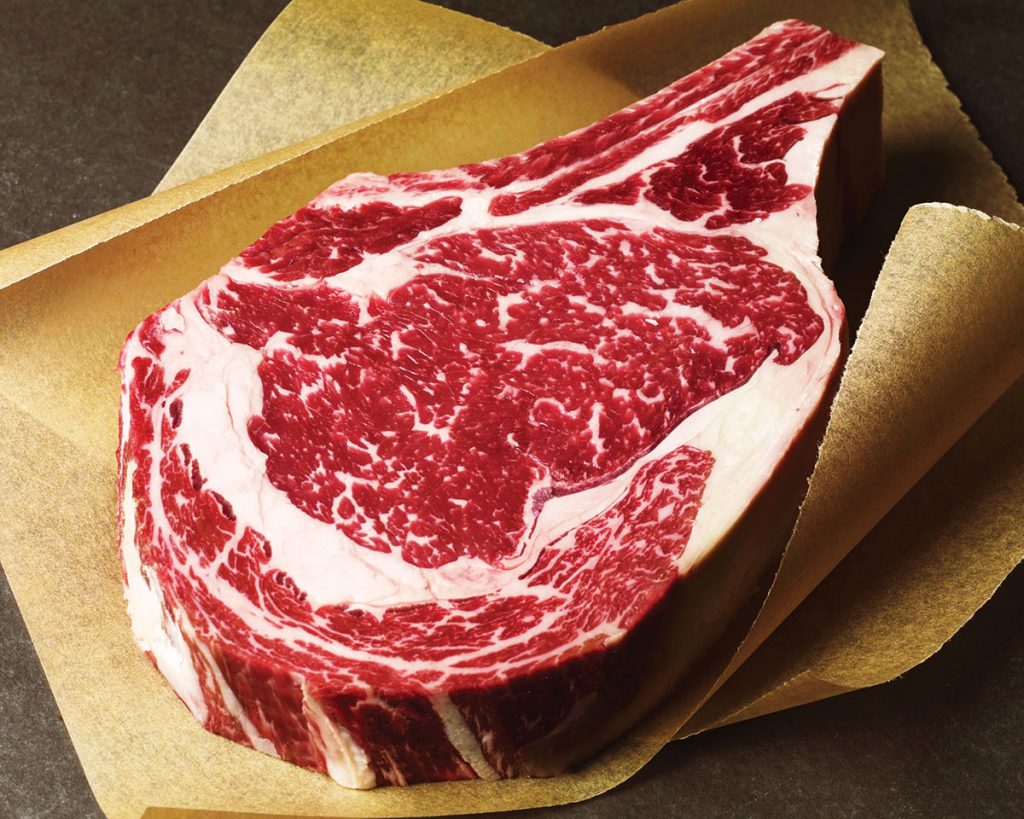
Genetics, management and extended feeding time can improve grades
Prime beef grades can bring top dollar in the beef market, and producers may want to consider structuring their breeding, nutrition and management programs to hit prime grades, if possible.
Producers working towards prime will need to be patient and consistent.
“There are a number of factors that must align to consistently produce cattle that meet the standards of prime quality grade carcasses,” Andy McCorkill, livestock field specialist with the University of Missouri Extension, explained.
“Obviously, the cattle must possess the genetic qualities required to lay in intramuscular fat, commonly called marbling,” he explained. “Genetics make up 40 to 50 percent of the quality grade puzzle so selecting breeding stock that have the potential to increase quality grade is an important factor to consider.”
Although there are individuals that shine within every breed for carcass quality, when looking at breed averages, British breeds, such as Angus and Hereford, tend to be more likely to meet prime quality goals than the Continental breeds, McCorkill said.
Checking records will also help a producer make decisions to help herds reach prime. Looking at breeding animals with high accuracy levels of top level EPDs in the carcass traits will help producers improve the quality grade of the cattle they are raising.
Besides genetic potential, McCorkill explained management and nutrition must be looked at to ensure the genetics a producer has bred into their cattle is used to maximum benefit.
“That piece of the puzzle begins prior to the calf crop ever hitting the ground, by taking care of the cow herd from a nutritional standpoint. Fetal programing research has shown that prenatal nutrition has a significant impact on the ability of the subsequent calf crop to reach even choice quality grades,” he said. “Reducing stress levels on the calf at all phases of production is critical to increasing quality grades. Anytime the animal is stressed, it is probably pulling energy reserves off the body, sacrificing marbling or at least keeping additional intramuscular fat from developing.”
McCorkill explained that keeping and feeding cattle for longer can be another significant tool to utilize to increase marbling scores.
“We saw this firsthand with the steers in the Missouri Steer Feedout earlier this year,” he said. “Due to COVID-19 plant shutdowns, the steers were unable to be slaughtered and had roughly six weeks more on feed than they would have under normal conditions. We had more high choice and prime carcasses this time than in years past because of it.”
It is a balance, however. Longer feeding periods and increased quality grades can be detrimental to yield grade due to the amount of exterior fat on the carcass.
“In recent years, discounts for yield grade 4 and 5 cattle haven’t been too steep in relation to quality grade premiums, often making it enticing to feed longer and improve quality grade. I would caution weighing the added value of premiums against the added costs of additional days on feed and see that it makes economic sense,” McCorkill advised.
With the additional workload, producers might wonder if consistently achieving prime grades is an attainable goal.
“With time, management and a little luck, catching quality grade premiums is possible,” McCorkill said. “I would encourage producers to do their homework, select a cattle feeder who has a track record of producing high-quality carcasses if you’re interested in feeding cattle and improving carcass quality. You must first make sure all your ducks are in a row at home with health and nutritional management in the cow herd, as well as the calf crop. Selecting breeding stock that have the potential to improve carcass quality is also imperative.”
Not everyone will be able to meet prime grade standards.
“We should all consider it a challenge to improve carcass quality for the sake of the beef industry,” McCorkill said.





